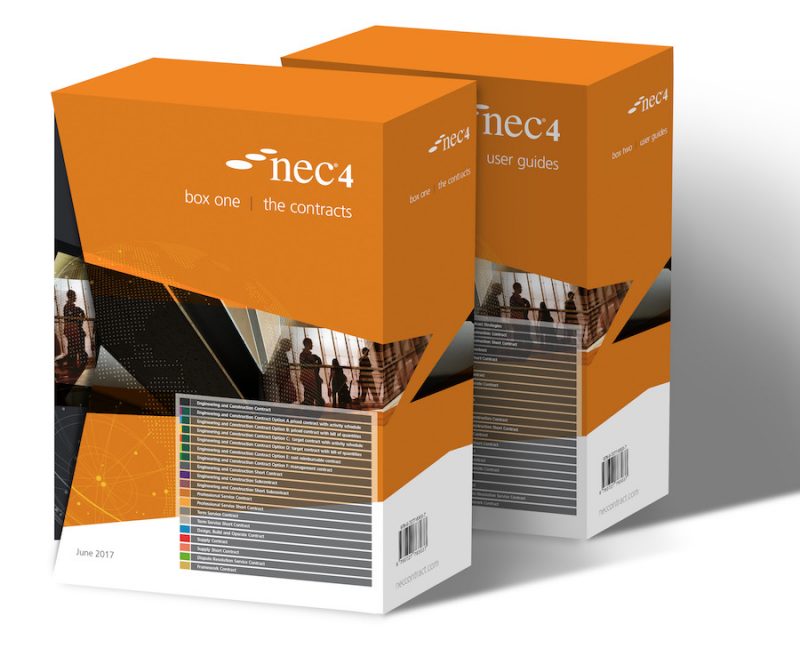Collaborative Australian Construction Contracting with NEC4
Posted: 24th March 2021
Posted in: Blog

Posted: 24th March 2021
Posted in: Blog
COVID-19 has highlighted the importance of collaboration between all parties when impacted by a common risk or threat. Collaboration is also essential when embarking upon complex endeavours such as the design and construction of infrastructure and build environment projects.
Yet, collaborative procurement and contracting approaches are still uncommon in Australian engineering and construction. Traditional ‘hard dollar’ contracts typically used in the market are highly bespoke and drive adversarial outcomes. This is exacerbated by the scarcity of up-to-date standard form contracts that can simply be picked up and executed for the various project procurement solutions. Australian Standard form contracts are both adversarial in nature, and many years out-of-date. The problem is widely recognised and generates much industry discussion – more so now as focus is on the post-COVID economic recovery. Our industry sorely needs a transformational contracting approach.
The UK’s Institute of Civil Engineers, New Engineering Contract® NEC4 suite are widely recognised as the most collaborative standard form contracts available. They have been developed and in use for nearly 30 years and have gradually evolved from their UK base into other construction contracting geographies.
So why is NEC4 so collaborative?
At its core, good communication and project management process is the characteristic feature. In the widely used Engineering and Construction Contract (ECC) for example (typically known as a Design & Construction (D&C) contract in Australia), risk management is incorporated in the specific terms of the contract. There is an overarching general requirement of both parties to act ‘in a spirit of mutual trust and cooperation’ and a requirement for either party to give ‘early warning’ to the other of any matter that could negatively impact the cost, program, or quality of the project. This active risk management process continues with the project manager entering this risk into the project risk register, which is formally defined in the contract. Either party then convenes a ‘risk reduction meeting’ which the other party is obliged to attend. Here they work together to:
By requiring the participation of both contract parties, the goal is clearly to achieve the outcome best for the project – not best for an individual party. Following the risk reduction meeting, the project manager then issues the updated risk register and for any decision that needs to change the works information, they instruct the change at the same time as the risk register is updated. This change instruction caters for a variation to scope which is typical of any construction contract. In the NEC4 ECC however, because it flows directly from the risk reduction meeting, it provides a clear pathway by which a reallocation of a project risk might be made.
Another way that the NEC4 ECC ensures that uncertainties are dealt with contemporaneously is by the adoption of various deeming provisions. These operate by requiring the Principal to respond to the Contractor on issues such as submission of a program, a variation claim, or a claim for an extension of time, within a defined period. Should they fail to respond, and the Contractor provides a further notice which still does not bring a response, then the matter is contractually deemed to be accepted by the Principal in favour of the Contractor. Such provisions ensure that unresolved issues are minimised, disputes are avoided, and both parties have greater clarity on the commercial outcome of their project.
Other contract forms in the NEC4 suite that will be of interest to and commonly used by construction contractors are the Supply Contract (SC) for procurement of materials, and the Professional Services Contract (PSC), for engaging design consultants. All of these contract forms have companion ‘short form’ contracts for smaller, shorter-term, or lower-risk engagements.
In recent years, some Australian projects have used the NEC® contracts. To do so however saw bespoke changes introduced to not only deal with Australian law, but which also shifted the risk and modified the contract away from its standard. Specifically, the suite’s core payment clauses did fully not align with or use the terminology of the various security for payment legislation in Australia.
This has now been rectified. In 2019, the NEC® embarked upon making the necessary changes to the NEC4 contract suite so they could be easily used for Australian construction projects. The drafting, review, and approval process has been disrupted by COVID-19 as one might expect, however the NEC® has now approved and published the NEC4 Y(Aus)1 Clauses for every contract in the suite. These clauses outline and translate the contract payment terms in compliance with the security of payment legislation in each Australian jurisdiction. For Australian projects, each standard contract now simply needs to cite the Australian Y(Aus) 1 clause in the Contract Data. With the contract not requiring modification and shifting of legal risk, contract formation discussions are focused on matters of scope and commerciality rather than terms of law.
With the availability of an ‘off-the-shelf’ contract for the majority of all project procurement solutions, there is hope that the NEC4 contract suite will become more widely used and transform Australian construction into a more collaborative contracting environment.
Guest author:
Kevin Pascoe, Executive Director
Laguardia PCD
All images: https://www.neccontract.com/
